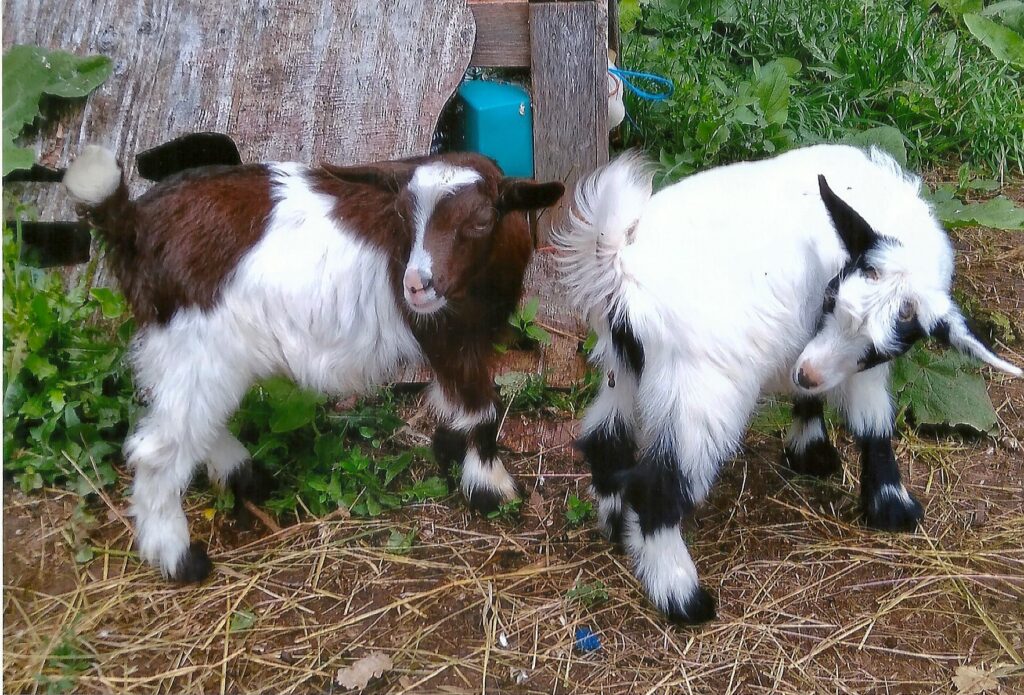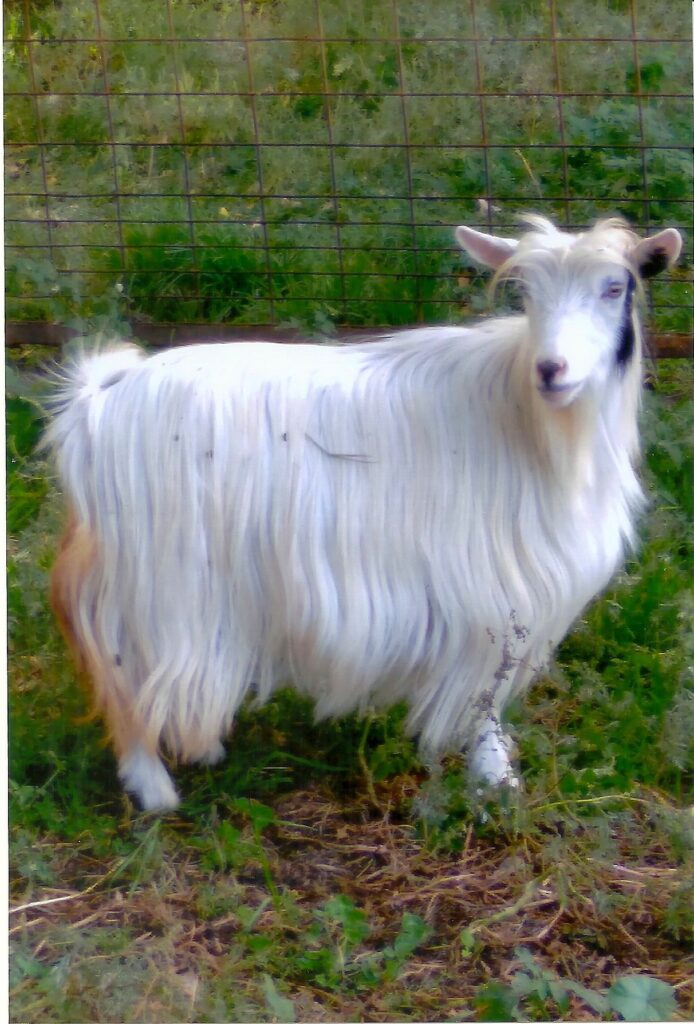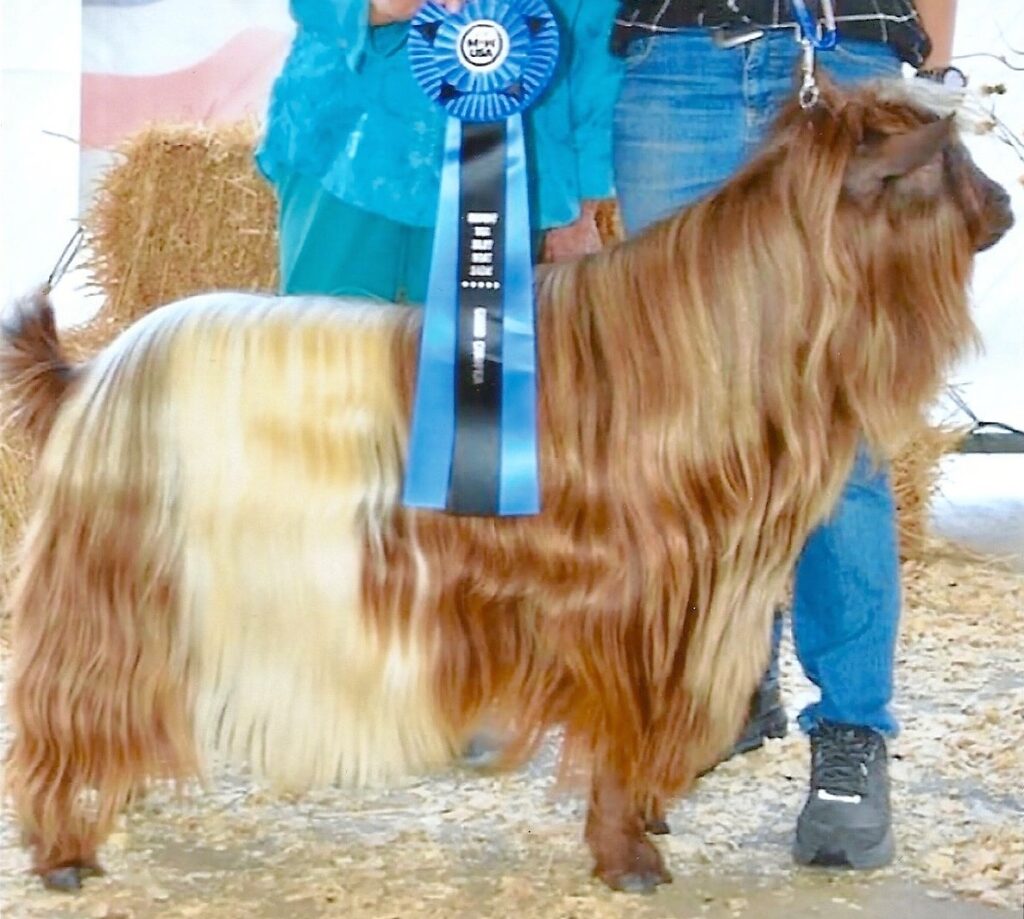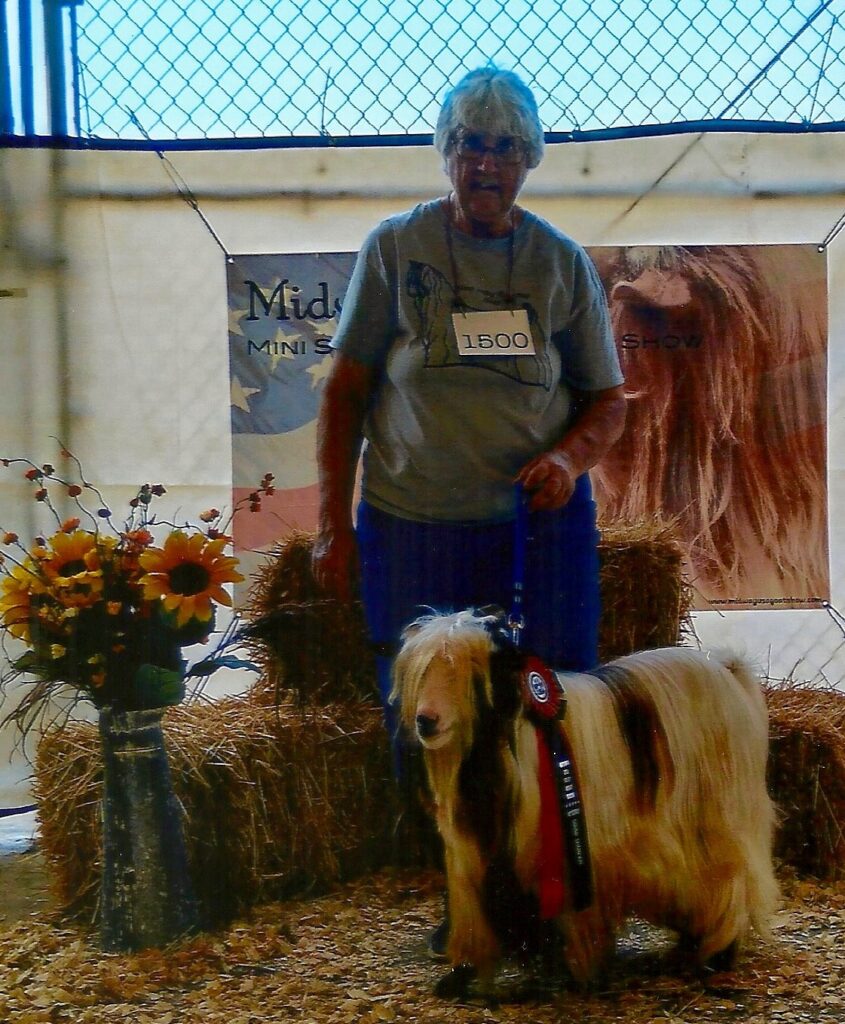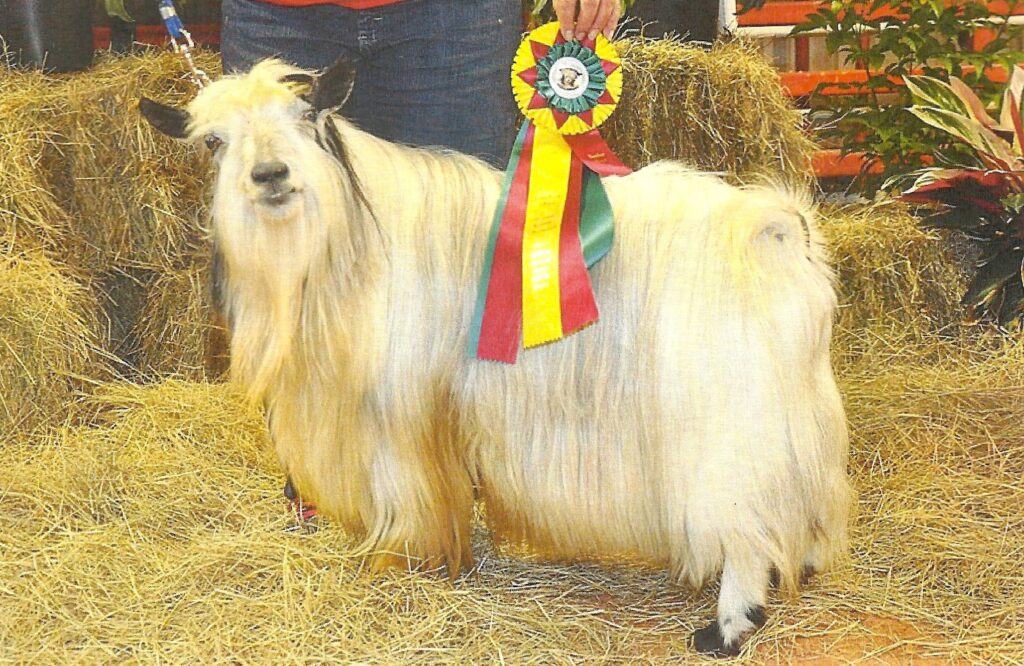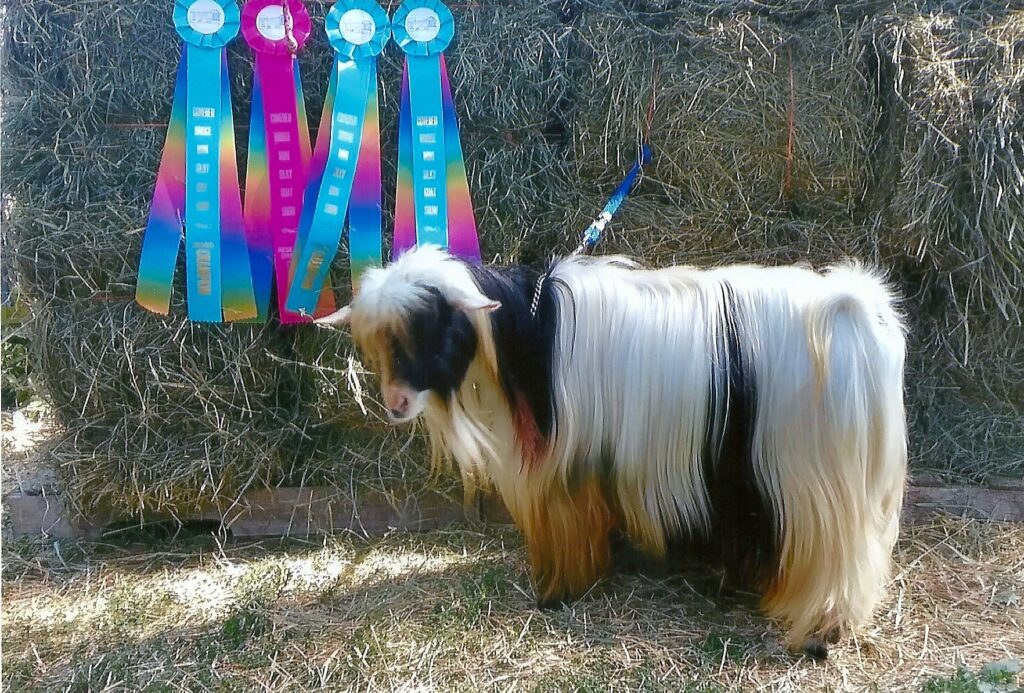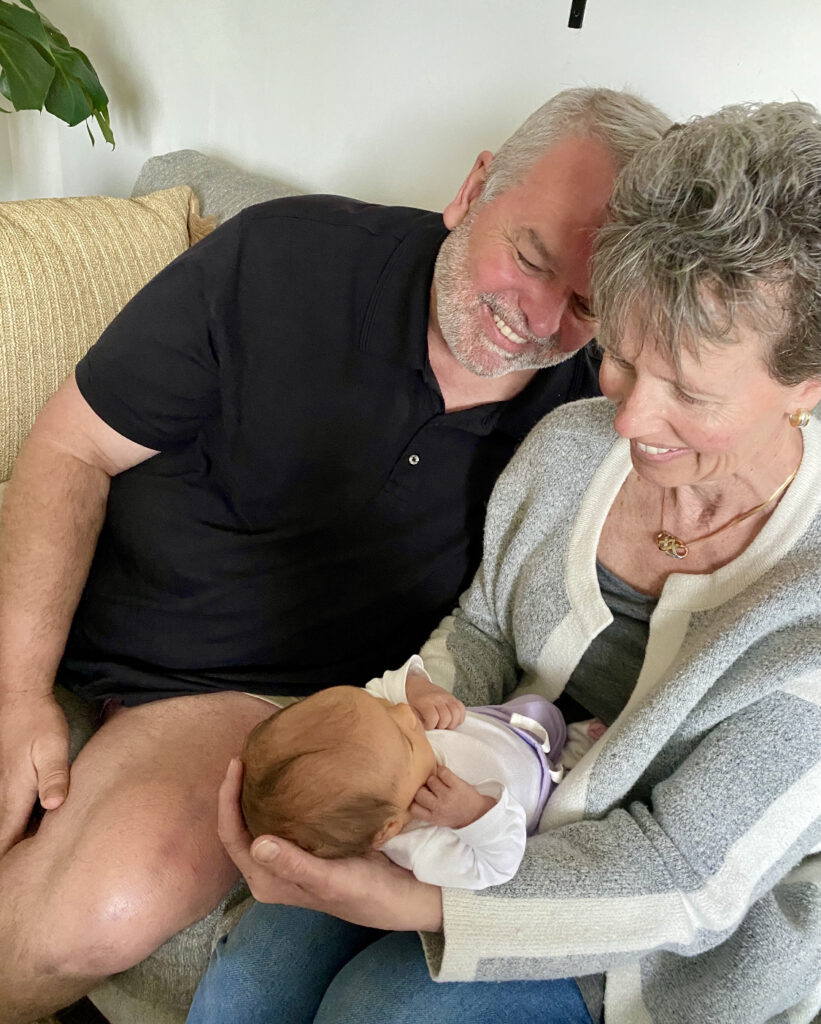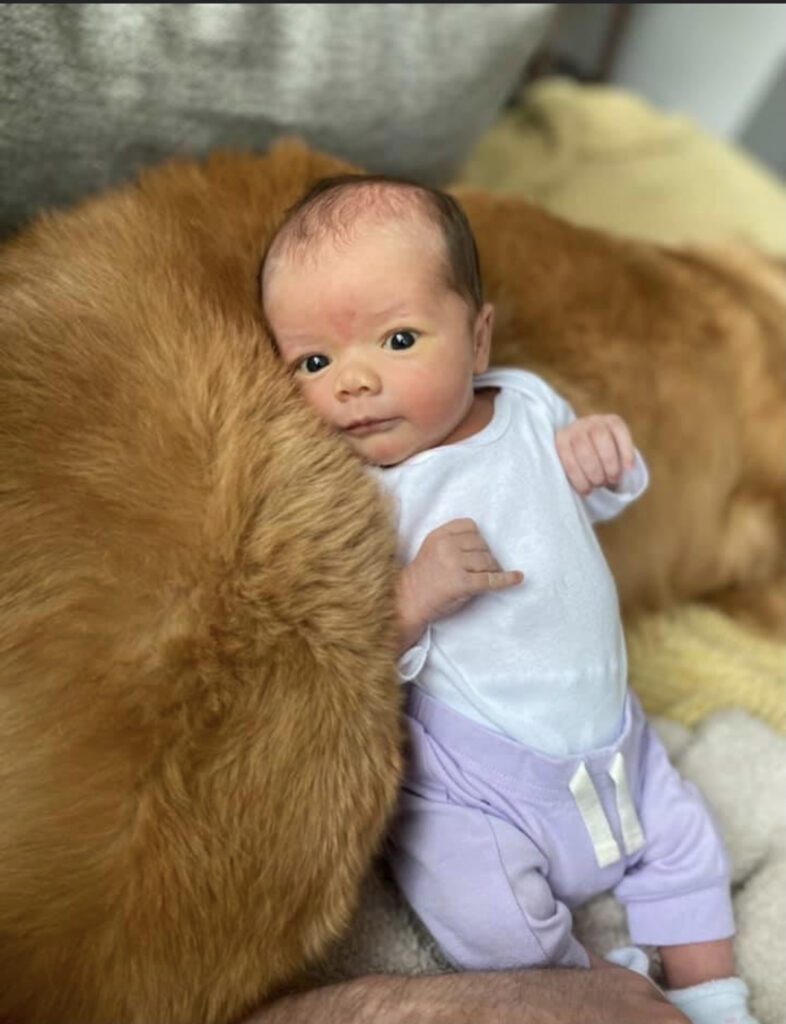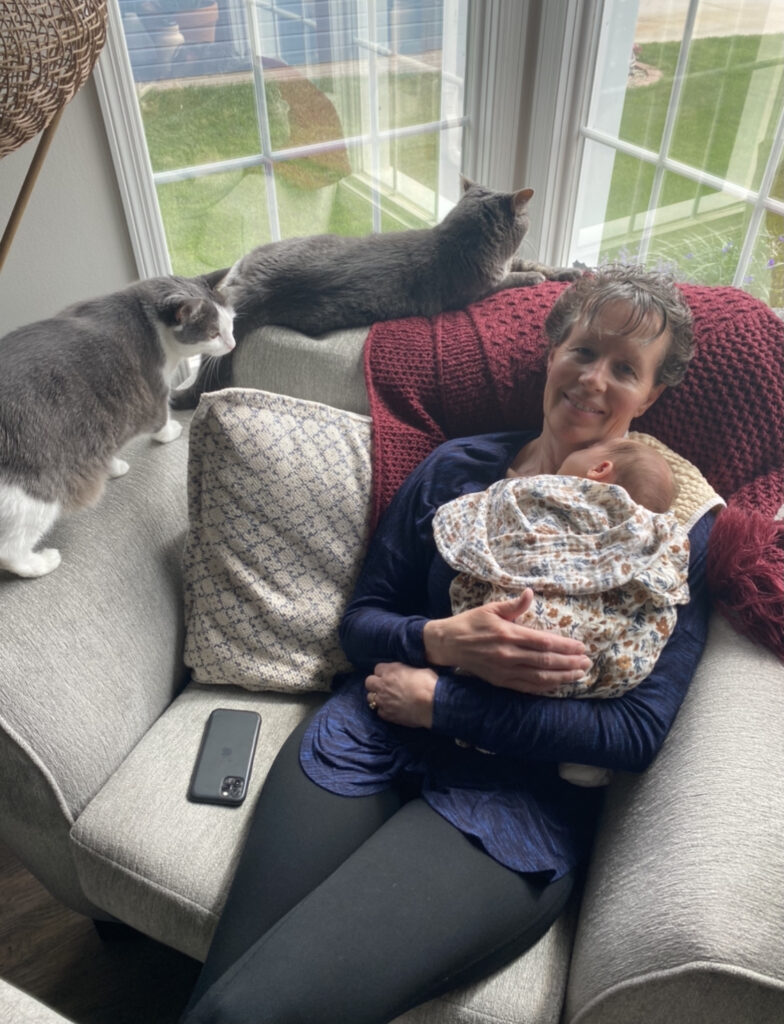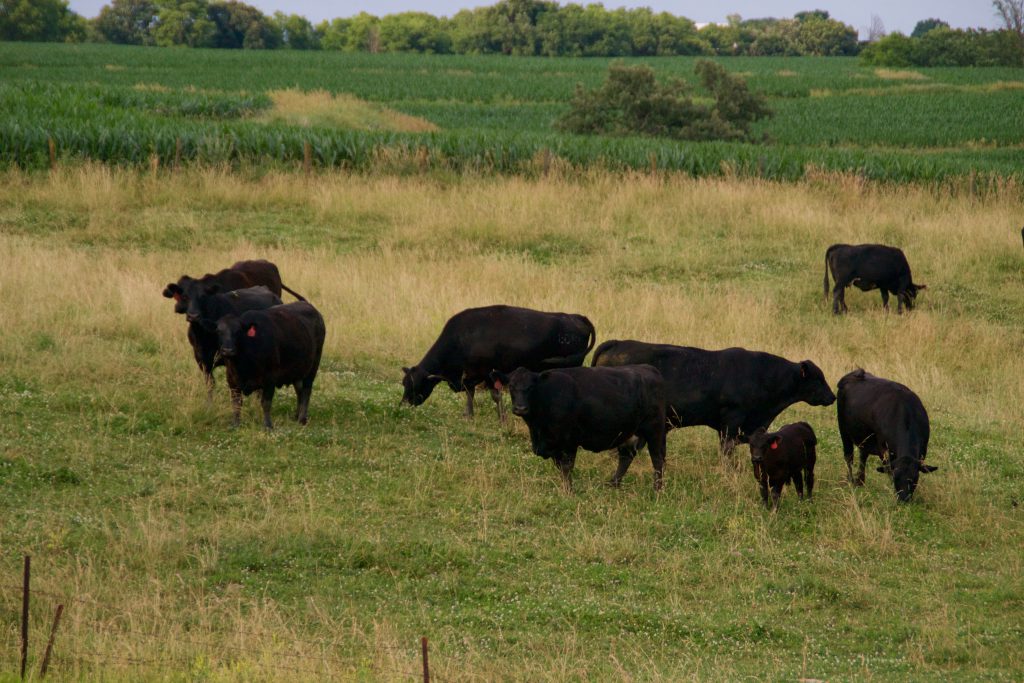Mini Silky Goats
I would like to thank Grace Davidson for her contribution to Winterset Veterinary Center’s blog. Grace has been a long time client of ours and we are so glad she was willing to share her Mini Silkies with us.
It is love at first sight when meeting a Miniature Silky Fainting goat. The mini silkies sweet disposition and beautiful soft hair makes them great for showing and/or pets.
I got my first mini silkies from a breeder in Kansas in 2008. I would add a few more with each passing year and eventually started raising and showing them locally. I now travel to 2-3 shows a year and have been all over the Midwest showing and even into Texas and Virginia. I use natural breeding, but many have gone to AI which means artificial insemination.
Good quality goat feed is needed along with goat minerals, baking soda (to prevent bloat), a good grass/alfalfa hay mixture, and clean fresh water daily. Required immunizations are CD/T and a preventative external and internal parasite program. Trimming hooves is an important procedure to prevent joint issues. Your veterinarian can assist you with other health needs as things arise.
Their long silky hair hangs straight from the body in a range of colors and patterns. The goal is to have a full long skirt, long chest and neck hair, full beard, muff on the face and bangs. Bucks (male goats) are more likely to have bangs and have thicker, fuller coats than the does (female goats) are. There are varying degrees of coat and coat placement. They can be snowy white, raven black, shades of brown, or a combination of these colors. The height limit for a doe is 23.5 inches at the withers and the male is 25 inches. The male weighs between 60-80 lbs and the female 50-70 lbs. Their smaller size makes them more manageable to work with. The lifespan is usually 10-15 years. The oldest buck I have is 9 years. His name is Breeze, and he is retired now. He probably misses the life of a show goat. He had many friends at the shows.
Their coats need to be kept clean and free of tangles and burrs. I use a good human shampoo and conditioner to bathe them the day before I travel to a show. I then bathe them again at the show. We have even been known to offer an oil treatment if a goat’s coat is dry or course. How a coat is cared for depends on the color of hair and type of coat the show goats have.
The goats are judged on conformation, body condition, and length, evenness, and silkiness of coat. The four main divisions are Junior Does, Junior Bucks, Senior Does, and Senior Bucks. Each division are further divided into different classes. If you get 1st or 2nd place in your class, you qualify to return to the ring and a Grand Champion and Reserve Grand Champion are selected from the division. When all 4 Grand Champions are named, the judge will choose 1 Best in Show. If a goat has won 3 Grand Champion ribbons, it gets a title of Master Champion. I had my first home bred goat earn that title about 4 years ago. Through selective breeding the Silkies have developed better conformation and coats, so the competition is tough.
Fainting goats do not actually faint. There is no pain involved. Some will continue to chew their cud during the spell and after a few seconds their muscles relax, and they jump up like nothing ever happened. This condition is called Myotonia Congenita. This is a genetic mutation. The muscle fibers stiffen for 5-30 seconds and the goats collapse. If the goats are startled or even excited about treats or mealtime these spells can occur. Myotonia Congenita can be found in other species of animals as well like horses, dogs, and even humans.
September 11-12, 2021, at the Madison County Fairgrounds, we will be holding the Covered Bridge Silky Show in Winterset, Iowa. All are welcome to come and see some of these lovely goats up close. The show draws breeders and goat owners with their Silky Fainting Goats from several states.
If you are looking for more information about these special creatures, please use the website www.msfgaregistry.org. The Miniature Silky Fainting Goat Association is always looking for more goat fans! Come check out our show and see for yourself if it is LOVE AT FIRST SIGHT.
